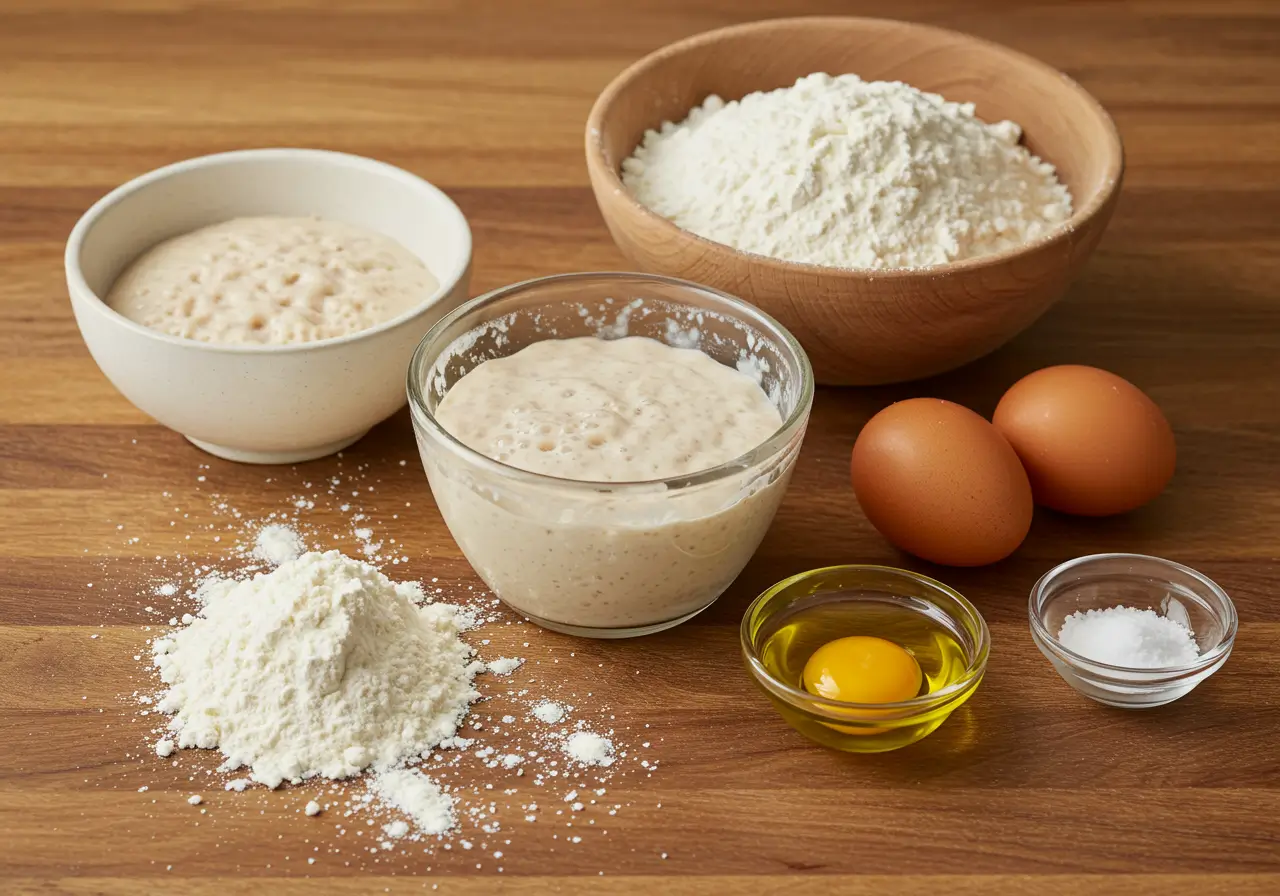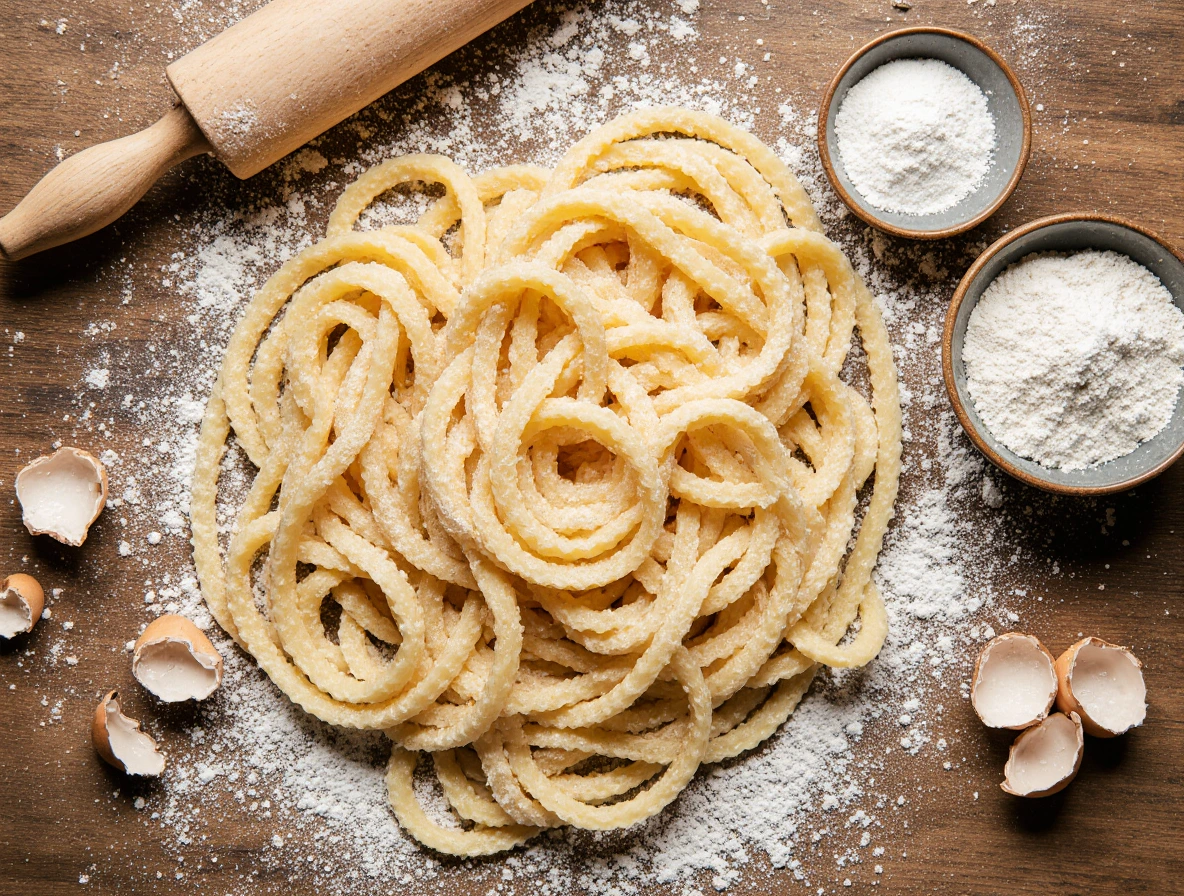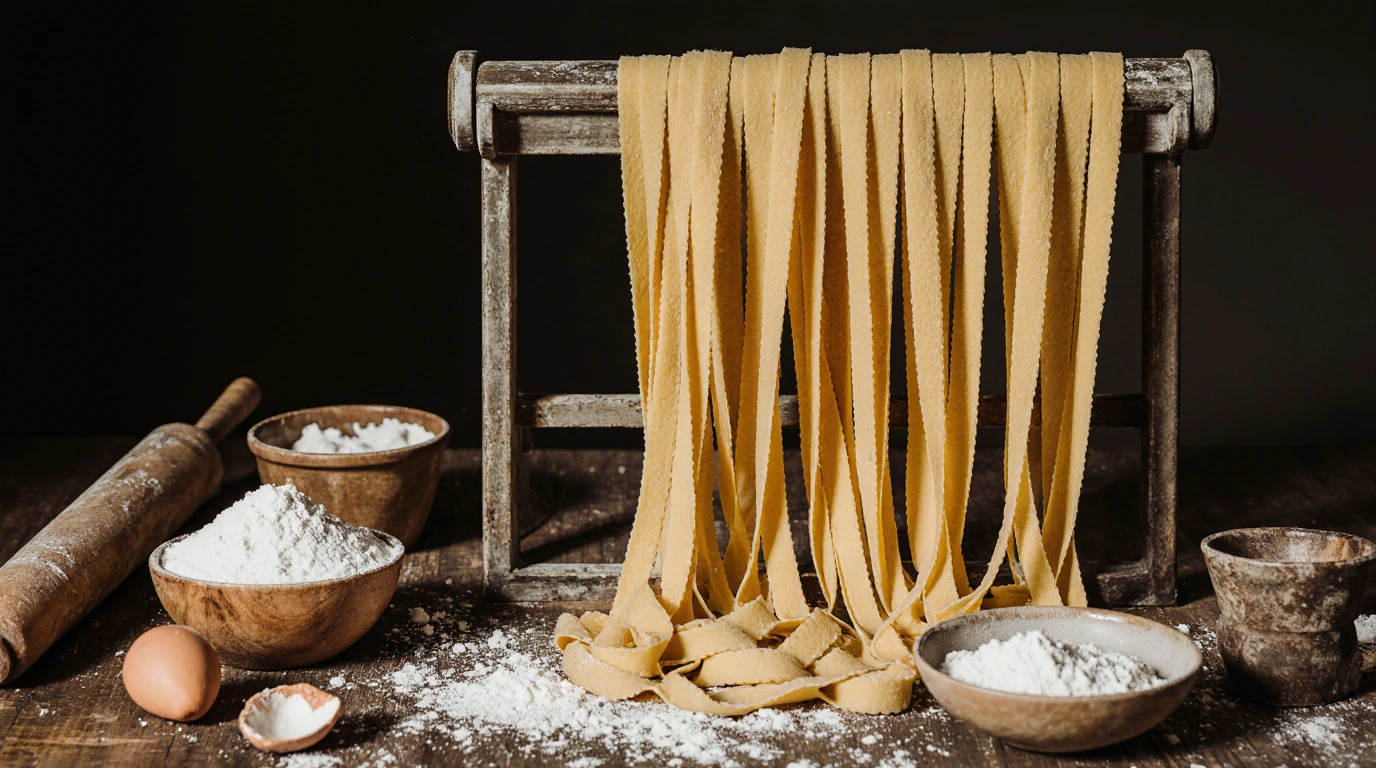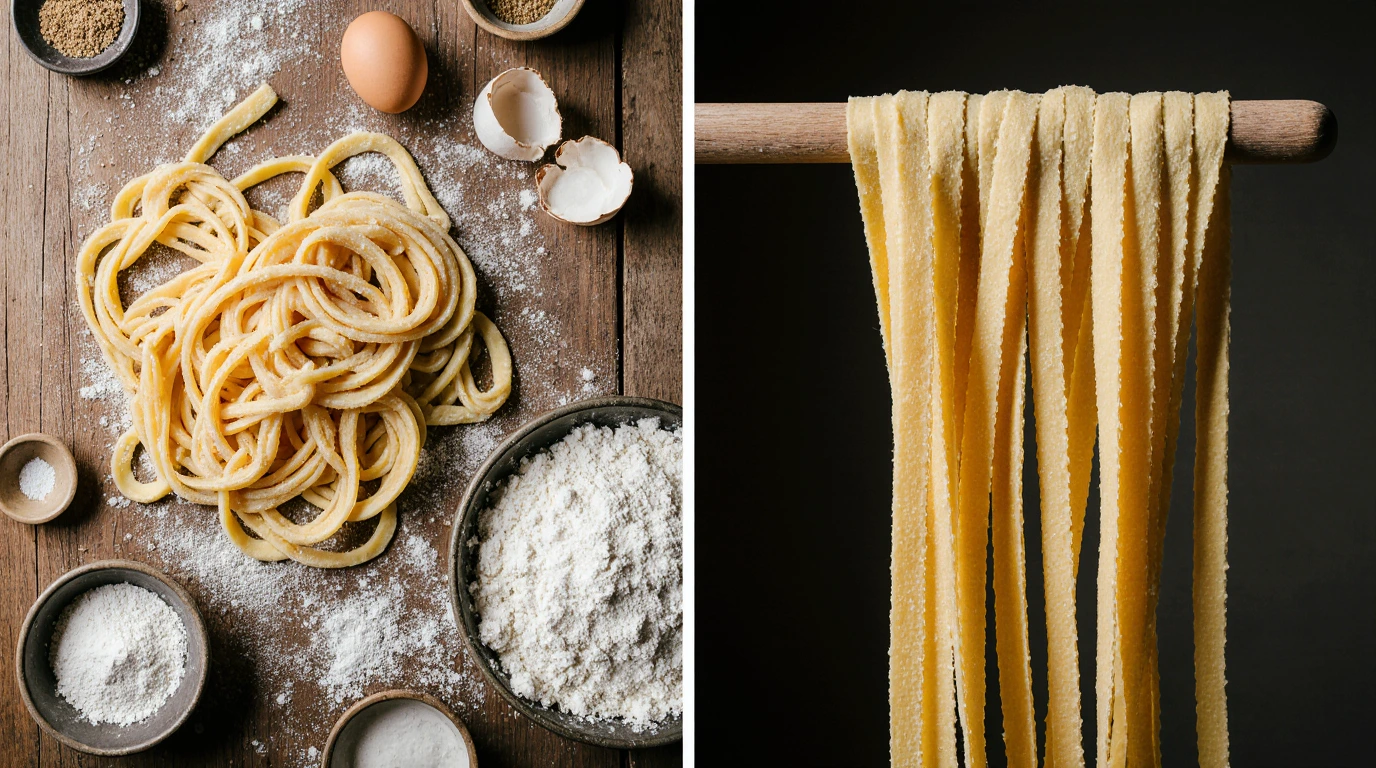Sourdough Pasta: How to Make the Best Fermented Pasta Dough
T.o.C
Table of Contents
Did you know that fermenting pasta dough with sourdough can boost its flavor, texture, and digestibility? If you love homemade pasta but want to take it to the next level, Sourdough Pasta is the game-changer you’ve been missing. Unlike traditional pasta, this version uses a live sourdough starter, adding a subtle tang and improving gluten structure for the perfect chewy bite.
In this guide, we’ll walk you through everything you need to make Sourdough Pasta from scratch—ingredients, timing, step-by-step instructions, and expert tips to avoid common mistakes. Whether you’re a sourdough enthusiast or a pasta lover looking for a new twist, this recipe delivers restaurant-quality results at home.
Ingredients for Sourdough Pasta

Making Sourdough Pasta requires just a few simple ingredients, but each plays a crucial role in texture and flavor. Here’s what you’ll need:
- 200g (1 ⅔ cups) all-purpose flour (or substitute with bread flour for extra chewiness)
- 100g (½ cup) active sourdough starter (100% hydration, bubbly and ripe)
- 2 large eggs (room temperature for better dough elasticity)
- 1 tbsp olive oil (adds richness and smoothness)
- ½ tsp salt (enhances flavor and strengthens gluten)
Optional Add-ins:
- Semolina flour (for dusting and a firmer texture)
- Herbs or spices (like dried oregano or black pepper for extra flavor)
Timing: How Long Does Sourdough Pasta Take?
Unlike regular pasta dough, Sourdough Pasta benefits from a slow fermentation process. Here’s the breakdown:
- Prep Time: 15 minutes
- Fermentation Time: 4–12 hours (depending on desired tanginess)
- Rolling & Cutting: 20–30 minutes
- Cooking Time: 2–3 minutes (fresh pasta cooks fast!)
Total Time: 4.5–13 hours (mostly hands-off fermentation)
Why Ferment Longer? A longer ferment (8–12 hours) develops deeper flavor and may improve digestibility for those sensitive to gluten.
Best Tools For Best Snack From Amazon:
Step-by-Step Instructions

1. Mix the Dough
In a large bowl, combine flour, sourdough starter, eggs, olive oil, and salt. Mix until a shaggy dough forms.
Tip: If the dough feels too dry, add a teaspoon of water. Too sticky? Sprinkle in a bit more flour.
2. Knead Until Smooth
Turn the dough onto a floured surface and knead for 8–10 minutes until smooth and elastic.
Pro Tip: The dough should pass the “windowpane test”—stretch a small piece thinly without tearing.
3. Ferment for Flavor
Place the dough in a lightly oiled bowl, cover with a damp towel, and let it ferment at room temperature for 4–12 hours.
Short on time? A 4-hour ferment still adds flavor, but overnight yields the best results.
4. Roll & Cut the Pasta
After fermentation, divide the dough into 4 portions. Roll each piece thinly (about 1–2mm) using a pasta roller or rolling pin.
Cutting Options:
- Fettuccine (wide ribbons)
- Tagliatelle (narrower strips)
- Pappardelle (extra-wide for hearty sauces)
5. Cook & Enjoy!
Boil in salted water for 2–3 minutes until al dente. Toss with your favorite sauce and serve immediately.
Nutritional Information
| Serving Size (100g) | Calories | Carbs | Protein | Fat | Fiber |
|---|---|---|---|---|---|
| Sourdough Pasta | 220 kcal | 38g | 8g | 4g | 2g |
Why It’s Healthier: Fermentation breaks down gluten and phytic acid, making nutrients more bioavailable.
Healthier Alternatives
- Gluten-Free: Swap all-purpose flour for a gluten-free blend (add xanthan gum for elasticity).
- Egg-Free: Replace eggs with 60g aquafaba (chickpea brine) for a vegan version.
- Whole Grain: Use whole wheat flour for extra fiber (may require more water).

Serving Suggestions
- Classic: Toss with garlic butter, Parmesan, and fresh herbs.
- Creamy: Pair with Alfredo sauce and sautéed mushrooms.
- Light & Fresh: Mix with pesto, cherry tomatoes, and pine nuts.
Common Mistakes to Avoid
❌ Using inactive starter → Ensure it’s bubbly and passes the float test.
❌ Over-fermenting → Beyond 12 hours, dough may become too sour or sticky.
❌ Skipping the rest → Letting dough relax before rolling prevents tearing.
Storing Tips
- Fresh Pasta: Dust with semolina, store in an airtight container for up to 2 days in the fridge.
- Freezing: Lay flat on a tray, freeze, then transfer to a bag for 3 months.
- Cooked Pasta: Toss with olive oil to prevent sticking; keeps for 2 days refrigerated.

Conclusion
Sourdough Pasta is a flavorful, nutrient-rich twist on traditional homemade pasta. With just a few ingredients and a little patience, you can create noodles with superior texture and digestibility. Whether you enjoy it with a simple garlic sauce or a rich Bolognese, this recipe is sure to impress.
Ready to try it? Share your Sourdough Pasta creations in the comments below or tag us on social media! Don’t forget to subscribe for more fermented food recipes.
FAQs
1. Can I use sourdough discard for pasta?
Yes! Just ensure it’s not too old (within 1–2 days of feeding).
2. Why is my dough too sticky?
You may need more flour or a shorter fermentation time.
3. Can I make this without a pasta machine?
Absolutely—just roll it thinly with a rolling pin and cut with a knife.
4. Does sourdough pasta taste sour?
Slightly tangy, but the flavor mellows after cooking.
5. Can I air-dry sourdough pasta?
Yes! Hang it on a drying rack for 12–24 hours before storing.
Loved this recipe? Check out our Sourdough Pizza Dough or Easy Homemade Ravioli next!
Leave a Reply
There are no reviews yet. Be the first one to write one.

